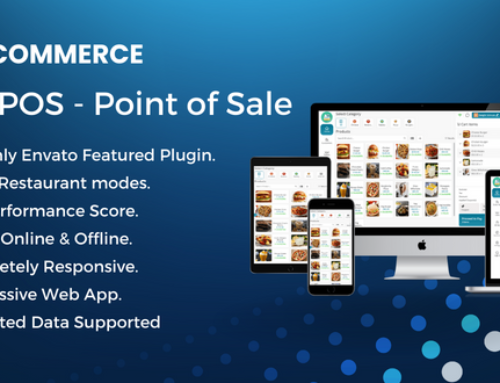A powerful and affordable HR software called HR Script is made to optimize the productivity of your HR team and simplify personnel management procedures. With this practical solution, you can modernize your HR processes, increase their effectiveness, and compile all of your personnel data into a centralized, user-friendly system.
Bid farewell to your office’s cumbersome paperwork and the disorganized spreadsheets that were left all over the place. Using HR script, you can build a thorough online database of people that contains employee profiles and guarantees quick access to crucial data. By giving your HR team a contemporary and well-organized workplace where they can effectively manage personnel records, track attendance, deal with leave requests, and speed up performance reviews, this user-friendly platform strengthens your HR department. With the help of an HR script, you can quickly automate typical HR operations, giving your HR staff more time to concentrate on strategic projects and employee engagement.
You can improve efficiency and lower the possibility of errors by deploying an HR script to modernize your HR procedures. The user-friendly interface and extensive functionality make data administration, record-keeping, and staff onboarding easier. Everything is securely saved and simple to access, from personal information and work history to performance evaluations and training records. You can have complete control over your HR operations with this HR script, which also helps you increase productivity, increase data accuracy, and motivate and engage your workers.
Features
Backup of a database:
Make sure your data is safe and correct by making regular backups of the HR database. This reduces the chance of losing data and makes it easy to get it back if you need to.
System Preferences:
You can adapt the HR platform to fit your unique needs and preferences by configuring and customizing various system parameters in accordance with the needs of your organization.
Templates for emails:
Create and administer email templates within the system to simplify communication with employees for a variety of HR-related purposes, including onboarding, leave requests, performance reviews, and more.
Managing projects:
Use the HR platform to effectively manage and track projects, delegating work, establishing deadlines, and keeping an eye on the situation to ensure timely project completion.
Workers’ Management:
Maintain a thorough database of employee data, including biographical information, employment history, performance reviews, and more, to serve as a central management hub for employee data.
Roles in Management of Employees:
Establish and administer various roles inside the company, assigning particular access levels and permissions to guarantee data privacy and proper system utilization.
Project Management:
Track and manage the tasks you allocate to your staff members so you can delegate them effectively, keep an eye on their progress, and hold them accountable for finishing them on time.
Attendance:
Maintaining accurate records of work hours, absences, late arrivals, and early departures is made possible by keeping track of employee attendance within the HR system.
Payroll:
Streamline payroll processes by combining payroll management into the HR platform. This way, wages, deductions, and allowances can be calculated based on records of attendance and other relevant factors.
Departments:
Create departments or teams for employees within the HR system to enable efficient reporting, cooperation, and communication between various organizational units.
Designations:
Establish and maintain employee job titles or designations within the system to ensure that roles and responsibilities are clear and consistent for all employees.
Holidays:
Manage and keep track of holidays that are unique to your organization or location. This will make sure that leave management and schedules are done correctly, taking into account both local and company-wide holidays.
Travel:
Tracking and managing employee travel information, including as requests, approvals, costs, and itineraries, can streamline the procedure and guarantee the openness of all travel-related operations.
SMS Function:
To improve communication and guarantee timely information delivery, use the built-in SMS capability to send critical updates, reminders, or notifications to staff.
Events:
Organize and manage business meetings, training sessions, and events through the HR platform to make event planning, tracking of attendance, and post-event reporting easier.
Custom Fields:
Add custom fields to employee profiles or other pertinent areas to enable the addition of particular data points particularly to your company, ensuring flexibility and adaptability to your HR operations.
Meetings:
The HR platform’s meeting scheduling and administration features make it simple to coordinate, track participants, and manage agendas.
Accounting:
Integrate accounting capabilities into the HR system to make it possible to do financial management operations including tracking expenses, issuing invoices, and generating financial reports.
Performance:
Through performance management tools, which enable goal-setting, performance evaluations, and performance improvement plans, you may monitor and assess employee performance.
Support Tickets:
In order to effectively handle and address employee questions or issues, support tickets should be created and managed within the HR system.
Multiple users:
Support many users within the HR platform, enabling authorized people or roles to access and carry out tasks according to their given permissions and responsibilities.
Inventory Management:
Manage inventory-related duties effectively within the HR system, such as the management of products, managing the warehouse, purchase orders, orders for sale, order quotes, managing suppliers, and inventory report generation.
Products:
Ensure that the system has a complete database of all the goods or stock items, complete with information on names, descriptions, costs, and other pertinent characteristics.
Warehouse:
Keep an eye on and handle inventory levels of stock across various warehouses or locations. This makes sure that the availability of products is accurately tracked and makes it easier to keep track of inventory.
Purchases:
Manage the system’s procurement procedures, including the creation of purchase orders, the management of supplier data, the monitoring of deliveries, and the logging of purchase history.
Sale Order:
To ensure effective order processing, order monitoring, and client transaction management, it is possible to create and administer sales orders for goods and services.
Order of Quotes
Create and manage order quotes and quotations for prospective clients, enabling accurate pricing, proposal administration, and order conversion.
Suppliers:
To facilitate efficient supplier management and communication, keep a database of suppliers or vendors, complete with contact details, pricing agreements, and performance reviews.
Inventory Reports
Create comprehensive reports on your inventory levels, movements of stock, sales results, and other important variables. These reports will give you useful information for making decisions and organizing your inventory.
Training:
By managing training initiatives, monitoring training completion, and keeping records of training within the HR platform, you can support employee training and development.
Warning:
Establish warning or disciplinary procedures within the HR system to monitor and handle employee performance or behavior issues, ensuring prompt involvement and documenting of warnings.
Awards:
Create a centralized platform to administer and track awards presented to employees by recognizing and rewarding employee milestones and accomplishments within the HR system.
Assets:
Keep track of any equipment, vehicles, or other corporate property given to employees to ensure proper administration, upkeep, and accountability.
Transfers:
Manage staff moves or transfers within the organization, including transfer requests, approvals, and paperwork. This facilitates a smoother transfer process.
Complaints:
Utilizing a specific module in the HR system, handle employee grievances or complaints to guarantee prompt resolution, recording, and tracking of concerns.
System Records:
Store and maintain system-related papers, such as instructions, rules, or regulations, so that HR specialists and staff members can easily access pertinent data.
Official Documents:
Maintaining correct paperwork and compliance requires keeping and managing official employee records, such as confidentiality agreements, employment contracts, and performance improvement plans.
System Calendar:
Utilize the HR system’s integrated calendar feature, which enables users to plan and handle a range of activities, meetings, or deadlines, improving organization and coordination.
Leads:
Utilize the HR system to manage and track possible leads or business possibilities, making it easier to nurture leads, follow up with them, and convert them into clients or customers.
Clients:
Maintain a client or customer database in the HR system that contains contact information, a history of communications, and transaction records to enable effective client management.
Estimates:
Estimate and maintain estimates or quotations for the organization’s products or services, ensuring correct pricing and proposal management.
Invoices:
Create and manage bills for delivered goods and services, keep track of payments, produce bills, and keep a log of financial transactions in the HR system.
Employment (ATS):
To speed up the hiring process, which includes posting jobs, managing applicants, arranging interviews, and evaluating candidates, use an ATS module in the HR system.
Performance:
Through performance management modules, such as important Performance Indicators (KPIs) to measure important performance indicators, Performance Appraisals (KPAs) to evaluate performance as a whole, and Track Goals (OKRs) to define and monitor individual or team goals, employee performance may be monitored and evaluated.








